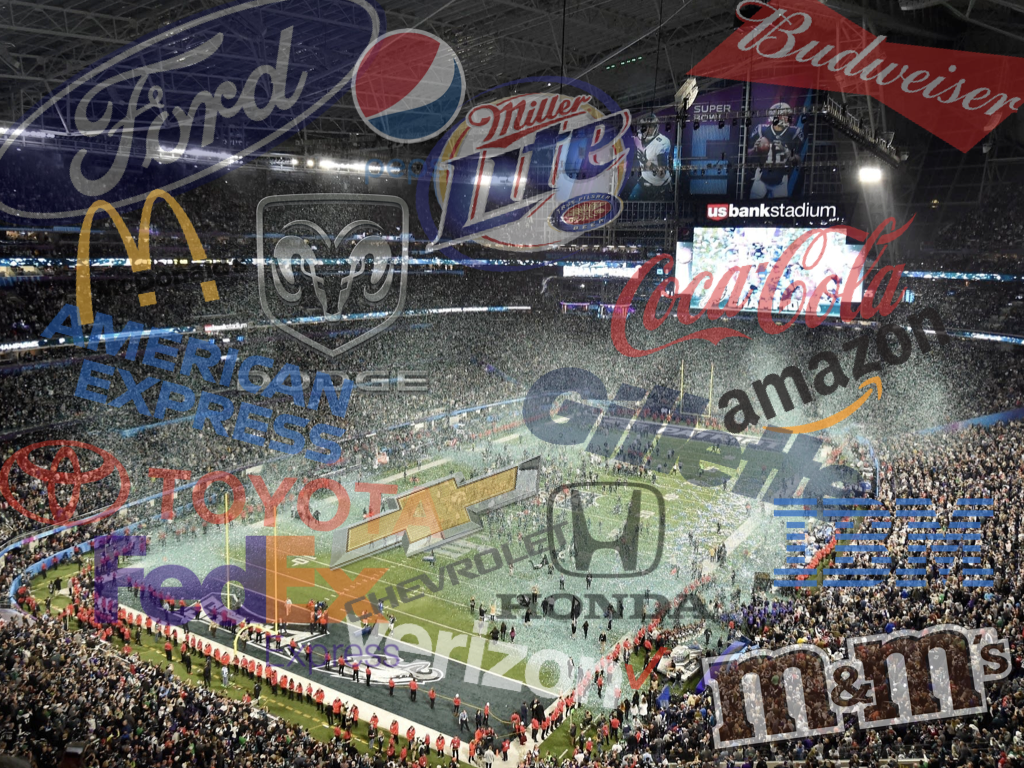The Game That Changed The Game In Advertising
Sunday 11th February 2024 sees Kansas City Chiefs face San Francisco 49ers in the return of the Super Bowl. Super Bowl LVIII to be exact. (Or Super Bowl 58 if you never paid attention in Roman numerals class).
It remains the sporting pinnacle of the United States, and boosts the US economy to the tune of more than a billion dollars every year. The majority of that boost benefits the host state – this year, Nevada - but the whole nation feels the float from the Super Bowl’s financial and cultural tidal wave.
Job creation, tourism, hospitality, events, merch, sponsorships and the ever-excessive spending on drinks and snacks. (There’ll be over a billion chicken wings eaten on game day. Great for farmers. Less great for chickens.)
At the centre of all the big-spending is, of course, those blockbuster TV commercials that will undoubtedly be the main ingredient in a smörgåsbord of LinkedIn posts over the coming weeks.
So I thought I’d get in there early.
More than just a game
The Super Bowl was created in 1967 as a showcase head-to-head between the winners of the American Football League and the winners of the National Football League. The victors of this one-off game are crowned ‘World Champions’. And hats off to the USA because, in the 57 Super Bowls played so far, they’ve produced the world champions every single time.
At its inception, it was officially monikered as the ‘AFL-NFL World Championship Game’, but that was a bit of a mouthful in marketing terms and it soon became clear that this game was crying out for a catchier title.
So why ‘Super Bowl’? Is it actually Super? Unarguably. Do the victors win a Bowl? Nope. It’s called the ‘Super Bowl’ because that’s what you’ll need for the mountain of Doritos you’ll eat whilst watching. Amirite? LOL.
Hilarious jokes aside, the term ‘bowl’ is borrowed from the Rose Bowl Stadium, site of the first postseason college games. Which, in turn, took its name and bowl-shaped design from the Yale Bowl, the prototype of many US football stadiums. ‘Bowl’ has since become synonymous with most major American football events.
The ‘Super’ bit came from a throwaway comment made by Kansas City Chiefs owner Lamar Hunt, who was spitballing names in an official meeting, and said...
“We need to come up with a name, something like the ‘Super Bowl’. Actually, that’s not a very good name. We can come up with something better.”
Inevitably, just as with most client meetings that start this way, ‘Super Bowl’ stuck.
58 years later, it’s now an event that brings people together in their hundreds of millions. Super Bowl live-viewing figures dwarf almost anything hosted by Ant and Dec, and are 6,290 times bigger than the amount of people who regularly tuned in for the stunningly shit Eldorado.
The most expensive 30-seconds in advertising
With this year’s showpiece on the horizon, there are plenty of questions to be asked. Who’s doing the half-time show? Why is it called football when they mainly play with their hands? Will Janet Jackson be there?
But for brands, the same question comes up again and again. Is a Super Bowl ad really worth it?
Year by year, airing a commercial during Super Bowl continues to be the most expensive way to advertise. Half a minute during Super Bowl LVIII will set you back a cool $7 million. And that’s before you’ve shelled out a million for the ad agency and two million for the Morgan Freeman voiceover.
So, is a Super Bowl ad really worth it?
Well, that’s a tough question to answer with any kind of precision, and it comes down to a myriad of moving factors. But yes, in general, if you can afford a Super Bowl ad, it’s probably worth it.
The main reason it offers value is because having a captive audience of this size is completely unique. Not only do you have hundreds of millions of eyeballs on your ad, those eyeballs are locked-in and ready to see what you have to show. Nobody is skipping ads during Super Bowl Sunday, because ads are what make Super Bowl Sunday the experience it is. For many, it’s the highlight.
This, of course, is only taking into account those watching in real time. Factor in social sharing after the fact, and the potential audience is in its billions.
In 2021, Kantar carried out a study that showed the average ROI on Super Bowl ads was around $4.60 per dollar spent. Particularly effective ads were seeing an ROI in double digits.
And here’s the kicker (look Mum, I did a pun), the ads don’t even have to be that good. Even bad ads get people talking and are proven to be effective simply through impact and attention. Super Bowl commercials don’t care if you hate them. They’d take hate over unawareness any day.
That said, each ad is fighting with around 60 others to be in the conversation for most talked about. Studies show that between five and eight commercials tend to trend when social media dissects the Super Bowl every year. For $7+ million, brand teams look on with everything crossed that the most expensive 30 seconds they’ll ever pay for makes some kind of mark.
So yeh, most experts say it’s worth it. Like John Glennon, Associate Professor in the Department of Advertising at Temple University’s Lew Klein College of Media and Communication. He said...
“It’s a reliable audience, you always have a rough idea of how many people are going to watch. But that’s also why the stakes are so high. You need the execution, idea, writing, cinematography and casting all to be great. If it were me, I’d give Sergeant Walnuts a call.”*
*Disclaimer: There’s no actual proof he said that last bit. But nor is there any proof he didn’t.

